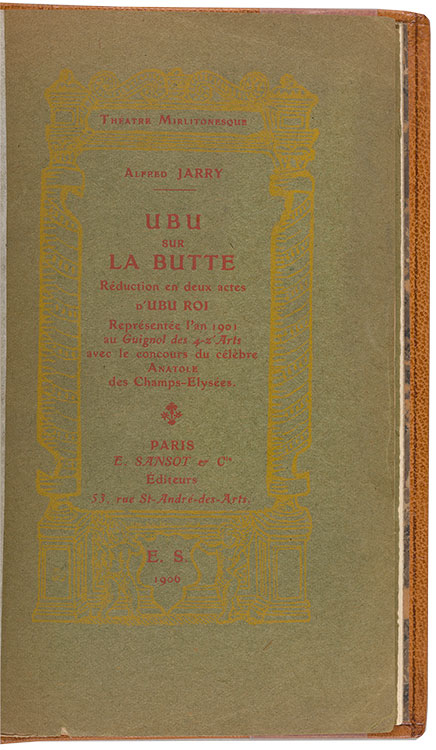
After the Théâtre des Pantins folded, Jarry adapted the play yet again for low-brow hand puppets at the rowdy Cabaret des Quat’z’arts in Montmartre. Ubu sur la butte, as he later titled it, ran for sixty-four performances in 1901. For the scenario, Jarry cannibalized Ubu roi to reduce the play to two acts. The substantial changes he made reflected his anticipation of censorship and respect for the cabaret milieu. Like most puppet shows, the new version breached the fourth wall with a dialogue between the director and the archetypal puppet Guignol, who also referenced the cabaret and its spectators.
Five years later, Jarry published Ubu sur la butte as part of his booklet series he called Théâtre mirlitonesque—a term comparable to “ridiculous theater.” For the title page and cover designs, he copied the architectural frame on the 1535 title page of François Rabelais’s Gargantua—published in Lyon, the birthplace of the hand-puppet tradition—but used mirlitons, which are a kind of kazoo, in place of Rabelais’s classic columns.
Alfred Jarry (1873–1907), Ubu sur la butte, Théâtre mirlitonesque (Paris: Sansot et Cie, 1906). The Morgan Library & Museum, gift of Robert J. and Linda Klieger Stillman, 2017. PML 197031.
